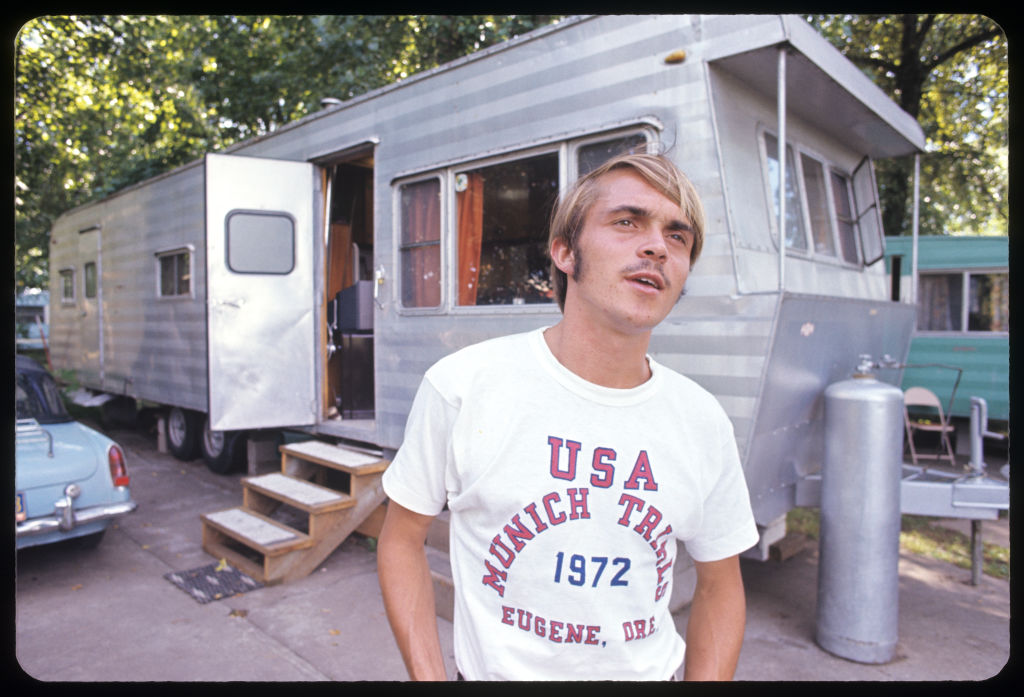
Steve Prefontaine’s Tragic Death Ended a Brief, Brilliant Running Career
For an athlete who only competed in the Olympics once and finished out of the money, Steve Prefontaine made a lasting impact on track and field and changed amateur sports in this country. Generations of young distance runners were trained to emulate Prefontaine, but it took decades for worthy successors to emerge.
The story of the charismatic runner contributed to a surge in participation in distance running and inspired movies about him long after Prefontaine’s death in 1975 at the age of 24.
Steve Prefontaine was a brilliant runner at a young age
Steve Prefontaine was already regarded as a prodigy by the end of 11th grade and went on to set a national high school record for two miles in 1969 as a senior, by which time he had made his college commitment. Prefontaine selected the University of Oregon and coach Bill Bowerman, who would launch Nike with Phil Knight.
His hard-charging, run-from-the-front approach to racing defied conventional wisdom, but Steve Prefontaine proved unstoppable at the college level. Sports Illustrated made him the subject of a cover story in June of his freshman year as a 19-year-old.
By the time he was done, Prefontaine had won three NCAA championships in cross country and swept the Pac-8 and NCAA titles in the three miles all four years of his career. At one point shortly after his college career, he would hold every American record for distances between 2,000 and 10,000 meters. Even though it wasn’t his strongest distance, Prefontaine went sub-four minutes in the mile 14 times.
Disappointment at the 1972 Munich Olympics
Steve Prefontaine’s junior track season was complicated by the fact that he was also aiming to earn a berth on the U.S. Olympic team that would compete in West Germany, where his parents had met and been married. He held up well under the rigors of an extended season and won the 5,000 meters at the U.S. Olympic Trials on his home track.
It should have been almost unthinkable for a 21-year-old American to win at that distance on the world’s biggest stage, but Prefontaine nearly pulled it off. Finland’s Lasse Viren, himself an emerging star who would pull the 5,000/10,000 double in Munich in 1972 and Montreal in 1976, won the race, with Mohammed Gammoudi of Tunisia placing second. Prefontaine, who had surged to the lead with under a mile to go, faded late and was passed for the bronze medal by Great Britain’s Ian Stewart in the closing strides.
The Munich Olympics will be remembered not for Prefontaine falling short of the medals podium, but rather for the massacre of 11 Israeli athletes and coaches, the seven swimming gold medals earned by Mark Spitz, and the dazzling gymnastics performance of Olga Korbut.
No letdown by Steve Prefontaine, but a tragic death
Though unhappy with his finish at the Olympics, Steve Prefontaine was able to shrug off his personal disappointment to come home and finish his college career with two more NCAA championships.
His real legacy, however, may have been a battle off the track. Prefontaine was one of the leaders of an uprising against the Amateur Athletic Union. Founded in 1888, the AAU came to exert enormous influence on most sports below the professional level. With the NCAA slowly chipping away at college-level control, the AAU tried desperately to hang on.
Prefontaine, tired of abysmal living and training conditions, helped lead a mutiny against the AAU and its well-paid executives. Although Prefontaine did not live to see it, Congress passed the Amateur Sports Act of 1978, which gave the USOC general oversight but returned control of the sports to governing bodies formed by each.
The work of runner Bill Rodgers and author Jim Fixx helped maintain the popularity for a while, but it can be argued that the last golden era for American distance running ended the night that Steve Prefontaine died in 1975.
Prefontaine, who was back in training for the Montreal Olympics the following year, took part in a meet in Eugene on May 29 with University of Oregon runners, a delegation of Finnish athletes, and some others. Prefontaine later drove Shorter and fellow runner Kenny Moore, who would later become an accomplished author, home from a party.
After dropping them off, Prefontaine was unable to negotiate a difficult curve and crashed his convertible into a stone wall. The runner’s convertible flipped and pinned Prefontaine, who was dead before medics could reach the scene.
A day after his funeral in Coos Bay, Oregon, a memorial service was held at the university’s Hayward Field.



